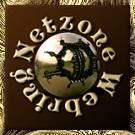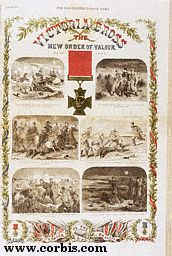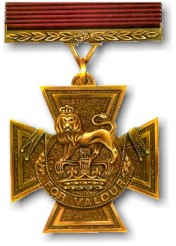![]()
Coasts
Rivers/Lakes
Lowlands/Plains
Geysers/Mud
Glaciers
Mt. Ruapehu
Mt. Cook
White Island
A Maori Legend
![]()
Abbotsford
Aramoana
Ballantynes
Brynderwyns
Cave Creek
Hawkes Bay
H.M.S. Orpheus
Influenza
Mt. Erebus
Mt. Tarawera
Rainbow Warrior
Seacliff Hospital
Tangiwai
Wahine
![]()
Annie Aves
Ata-hoe
Daisy Basham
Jean Batten
Minnie Dean
Mabel Howard
Margaret Mahy
Kath Mansfield
Kate Sheppard
Kiri Te Kanawa
Catherine Tizard
Murray Ball
Charles Goldie
Edmund Hillary
Richard Pearse
Lord Rutherford
Charles Upham
![]()
NZ FAQ--Funny
NZ Links
Credits
|
"In my respectful opinion, Sir, Upham won the Victoria Cross several times over." --Major General Howard Kippenberger, when asked by King George VI whether he felt Charles Upham deserved a second V.C. The highest medal for bravery which can be awarded to members of the armed forces of Britain and the Commonwealth is the Victoria Cross. Only twenty-one New Zealanders have gained this honour, and in its entire history only three people have ever achieved it twice. Of these three, only one served in the second World War. This man was New Zealander Charles Hazlitt Upham (1908-94). Charles Upham was a high country farmer. He spent six years as a shepherd, musterer and farm manager, mostly on high country sheep stations. During this period he developed strong stamina and lived in the harsh conditions of the rugged high country.
When World War II broke out in September, 1939, Charles volunteered to serve in the army stating he wanted to fight for justice. He rapidly rose to rank of sergeant, but rejected the chance of officer training, preferring instead to travel to Egypt in 1940 with the first group of Kiwis sent overseas. It was now he went through an officer training course, though due to his tendency to question everything -- and his outspoken opinions -- he was highly unpopular with the British officers and placed at the very bottom of the list when the course was completed. Charles was particularly critical of the tactics being used, he felt they relied too much on the methods which had been successful in World War I. Little consideration seemed to be given to the problems caused by tanks and more advanced aircraft. Upon completion of the course Charles became a Second Lieutenant, returned to the 20th Battalion, then was posted to C Company. In March 1940 his unit was sent to Greece to fight the German forces. Charles was so ill with dysentery during this campaign that he was forced to resort to riding a donkey. The German army had entered Greece in force, taking with them many tanks and aircraft. Eventually the New Zealanders had to be evacuated by the British navy, leaving much of their equipment behind. From Greece, Charles was sent to Crete where equipment was dreadfully short; one blanket between two soldiers was normal. On the morning of May 20th, 1941 a vast fleet of aircraft approached and the Germans parachuted down in the world's largest-ever aerial invasion. The New Zealanders held their fire until the parachutists were at tree height and when they commenced attack the German loses were very high. One German unit is recorded as losing all but two of the 136 paratroopers dropped.
Those that made it to the ground assembled and attacked Maleme. The airfield here was an important strategic point as any army holding it was able to land reinforcements, weapons and supplies via this route. Troops guarding the airfield came under sustained attack and when reinforcements did not arrive the troops were forced to retreat, leaving the airfield to the Germans. On the night of May 21st an attempt was made to recapture the airfield using the Maori battalion and the 20th battalion. At 3.30 a.m. the troops advanced forward. Little opposition greeted them initially, but as they moved closer a machine gun sprang to life from behind a tree. Charles ordered his men to take cover, then he moved carefully forward throwing hand grenades. He followed this up by rushing at the machine gun firing his pistol. It was only when the machine-gun nest was disabled that his men were instructed to move forward once more. Later he cleared a barn and a farmhouse using grenades, in the process he captured a number of German soldiers. When the group reached Pirgas, Charles once more cleared out several enemy strong points. However, at daylight they were still far from the airfield and once more withdrew. In the days that followed the New Zealanders continued to attack with Charles being hit by two mortar shells, one of which inflicted a serious shrapnel wound in his shoulder. He was also wounded in the foot, but in spite of his wounds he declined the chance to go into hospital and continued to fight. At one point two German soldiers fired at him. Charles dropped to the ground and played dead until he was able to crawl behind a tree. With one arm in a sling firing a rifle was difficult, so he rested the barrel in the crook of a tree. As two Germans approached he knew he could kill one, but would he be able to reload his rifle and aim again quick enough to kill the other? He shot the first soldier, then worked the bolt as the second soldier charged him. The second shot was fired with the German so close he fell against the barrel of Charles' rifle. On the 22nd May, the New Zealanders were evacuated from Crete and Charles carried a wounded man back to safety. Days later, at Sphakia, he killed twenty-two Germans. Several months were spent recuperating in Egypt, it was there he learnt he was to receive the Victoria Cross. It might be expected that Charles Upham would be elated, he wasn't. Reports say he felt others fought just as bravely and he also disliked any sort of fuss or attention. Commander-In-Chief, General Auchinleck, presented his medal, with Colonel Freyberg, Commander of the New Zealand division, in attendance.
The next big battle for Charles was at Minqar Qaim in June, 1942. The New Zealand Division became surrounded when four panzer divisions were sent into the area by Irwin Rommel, AKA, the 'Desert Fox'. Unless the New Zealanders could break out of the area they would all either be captured or killed. The decision was made to try around midnight, with the infantry forcing a gap for the trucks and armoured vehicles to charge through. The 19th battalion was chosen to lead the attack from the centre, the Maori battalion was on the right, Charles' 20th battalion was on the left. Charles blew up several trucks with hand grenades and was so close at times that he sustained wounds caused by fragments from the explosions. The end result of this battle was the New Zealanders broke through enemy lines and were saved. His next battle was on the 14th and 15th July, at El Ruweisat Ridge. The New Zealanders were asked to advance across a plain, believed to be only lightly held by German and Italian forces. Though they succeeded this area was more heavily defended than thought. Tanks intended as reinforcements never arrived and Charles set out in a jeep with several friends to report events. The jeep became stuck in soft sand and in the darkness Italian soldiers assisted them on their way never realising they were helping the enemy. The next
morning Charles' battalion was sent to reinforce the rest of
the New Zealanders. Charles was hit by a machine gun bullet
which shattered his arm, but he continued on and the Kiwis advanced
up the ridge. Using grenades Charles destroyed a German tank,
an entire truckload of soldiers and their machine guns. The
New Zealanders became trapped on the ridge and came under attack
from all sides. Charles was hit a second and third time, the
last occasion in the leg. He was weak from loss of blood and
unable to walk. With no remaining options the group were forced
to surrender.
Doctors tried to convince Charles his arm should be amputated, he stubbornly refused. Eventually a British doctor, who was also a prisoner, set the arm. After this he started the rounds of the prisoner-of-war camps in Italy and Germany. He became known as a troublesome prisoner who often attempted to escape. On the first occasion he leapt from a truck just after it had crossed a bridge and then ran into some trees, with the guards firing at him. Eventually he was found and dragged back. Another time he climbed over a wire fence at Weinsberg Camp. On that occasion he fell into a tangle of barbed wire between the two fences and was lucky not to be shot. His next attempt involved leaping from the toilet window of a moving train -- in the middle of the night. For the next twelve hours Charles remained free, until finally caught in a plantation by a group of soldiers. This last attempt resulted in him being transferred to Colditz Castle where he spent the rest of the war, with other 'dangerous' Allied prisoners, until April, 1945. On May 11th, 1945 King George VI pinned an official Victoria Cross onto Charles' uniform. The Kiwi hero then married and returned to New Zealand, planning to resume life as a sheep farmer. Not long after returning home Charles heard he was to receive a bar to his Victoria Cross. Charles is the only combat soldier ever afforded this honour. The other two recipients of a second Victoria Cross were both medical personnel serving in the 1st World War. This second V.C. caused much attention to be showered on Charles Upham, something he hated. When a fund was set up to help Charles buy a farm, he found the publicity highly embarrassing and refused the ten thousand pounds which was raised. His request was that the money go into a fund which would help the sons of servicemen attend university. Lost my navigation frames? Click here.
|





